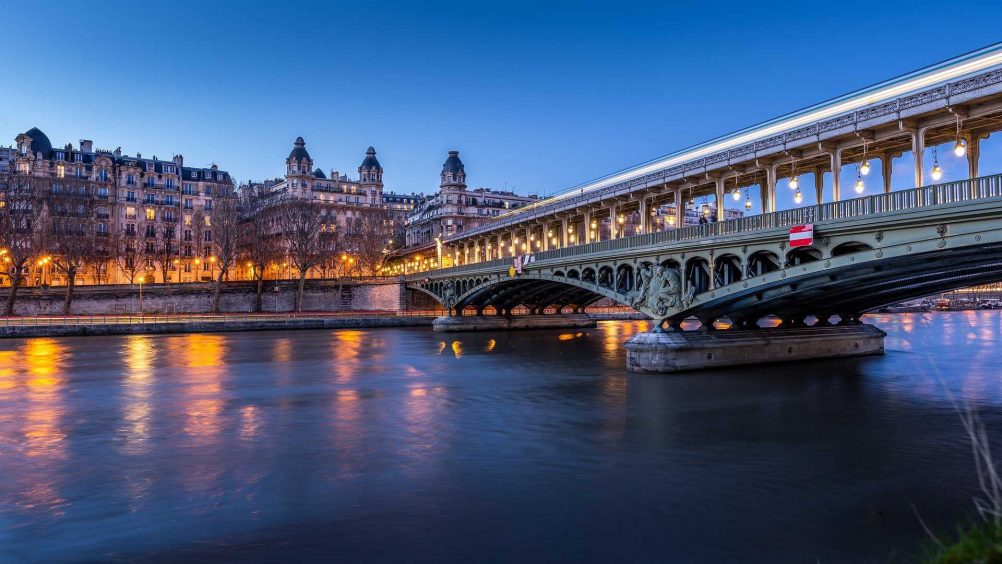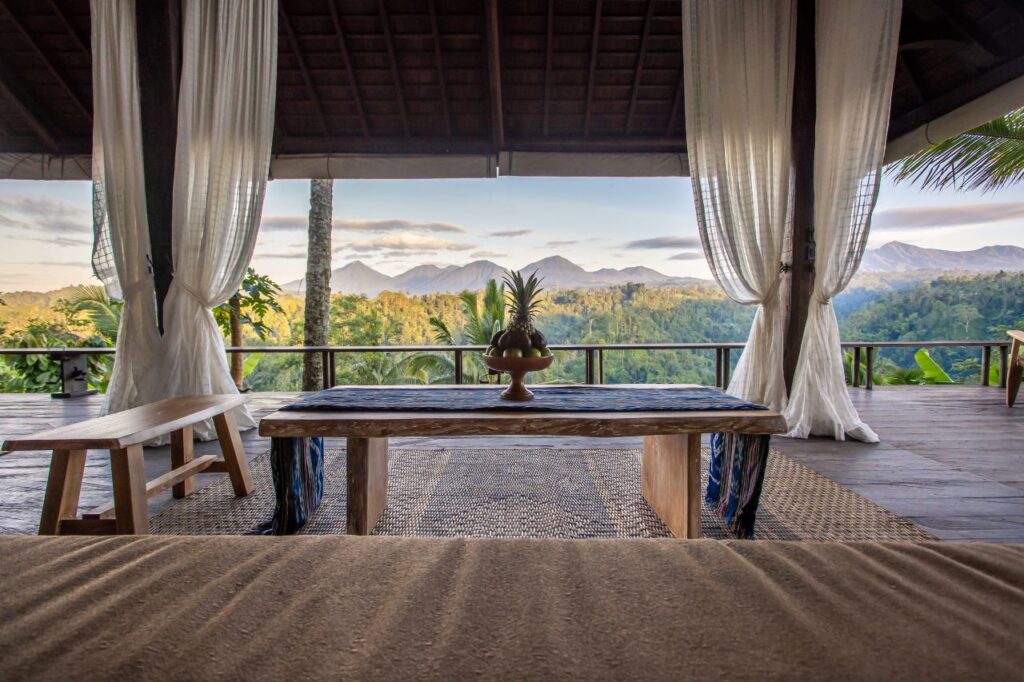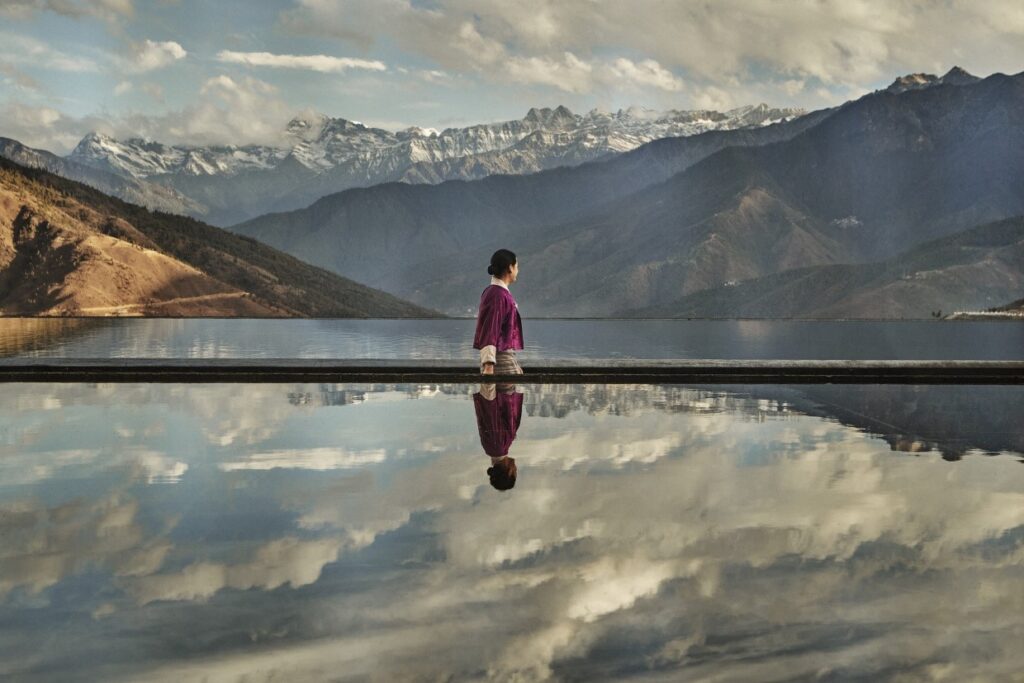Sailing down the Seine
The trip that converted me to river cruising.
Words by Ute Junker
Photo Pierre 9×6 via Pixabay
This article first appeared in Mindfood magazine
A soft blue dawn is breaking over the picture-perfect village of La Roche-Guyon. Trills of birdsong drift across the sleep-wrapped streets and over the still, tree-fringed waters of the Seine where our ship floats peacefully.
As the sky lightens more details come into focus, from the sloping mansard roofs atop the stone houses to the chalk-white cliffs against which the village is nestled. As I sip my café au lait and watch a shaft of sunlight illuminate a single ribbon of cloud drifting across the sky, I reflect that this is a beautiful way to wake up.
There will be plenty of other memorable moments on this inaugural voyage of the Viking Radgrid, one of the newest additions to Viking Cruises’ fleet of river cruisers. Yet this particular early-morning scene will stay with me. From the moment we pull up at the simple wooden dock, it feels as if we have stumbled across some hidden corner of France, a place that time forgot – yet this under-the-radar gem is only around 70km from Paris.
The magical feeling deepens when we step straight from the boat into the lovely potagere garden belonging to the Chateau de La Roche-Guyon, where the fruit trees and vegetable beds are laid out in geometric formation. Our guide explains that the castle’s elegant 18th-century façade is misleading; the building actually dates back all the way to the 12th century. This was once a border outpost, the place where the lands of the French king met those of the Dukes of Normandy. Charged with protecting the border against the hostile Normans, the lords of La Roche-Guyon built their mighty castle in a spot that is as defensible as it is lovely.
We discover some striking original interiors as we wander through the castle, including two exquisite chambers with hand-painted chinoiserie wallpaper, but it’s the formidable basements carved deep into the rock beneath the castle that really make an impression. Once used by the dukes to store their prized orange trees during the winter in order to protect them from frost, the basements were further reinforced during World War Two by German troops under Field Marshall Rommel as protection against the Allied advance.
My favourite part of the visit, however, comes when we climb up the secret staircase carved into the cliff to reach the keep, high above the castle. This is the oldest part of the castle and the views across the river and the valleys beyond are simply breathtaking.
Our visit to La Roche-Guyon illustrates exactly why river cruising is so much fun: you never know what lies around the next bend. On our journey down the smooth waters of the Seine, we immerse ourselves in the manifold delights of France, from the elegant streets of Paris and the dazzling splendour of Versailles to the rustic fields and forests of the countryside.
Viking Radgrid’s program director, Mieke Bakker, says that for many people, including herself, it is the lesser-known sites that are the itinerary’s real highlight.
“It’s those secret little villages with timber frame houses and tiny little boulangeries, the France that never changes, that is what I love,” she says. “The French respect tradition – these places stay like that because the French want them to stay like that.”
Cruising is the best way to discover those hidden treasures, she says. “The best places lie along the river because life developed along the rivers – they were the lifeblood of Europe, connecting the entire continent
Every day brings a choice of activities, and you don’t even have to step off the ship to take part. On the day that many passengers head off to Giverny to visit the Monet museum, a number stay on board for an alternative art experience, a talk on painters inspired by the Seine followed by a watercolour art class. Painter and lecturer Patricia Rynski d’Argence says Monet’s fame overshadows the area’s rich artistic history.
“Since the mid-19th century, when the train line was built between Paris and Rouen, plenty of painters have been drawn to the area,” she tells me. The big attraction, she says, is the light. “The light here is unique, reflecting off the white cliffs. Claude Monet used to say light changes every seven minutes – but I don’t know if he had a stopwatch.”
Monet isn’t the only famous painter who fell in love with the area. Fellow impressionist Pierre Bonnard lived in the neighbouring town of Vernon, and his former home was bought by the city a few years ago. “There are plans to develop it as an attraction, so people can see the balcony that features in so many of his paintings,” Rynski d’Argence says.
As interesting as the activities are, smart passengers schedule some time to simply watch the view go by. There is no shortage of seats with a view. You can soak it up while relaxing on the expansive sundeck atop the vessel, or while savouring a glass of Cotes du Rhone on the ship’s sun-drenched terrace. If you don’t want to feel like you are sharing the scenery, that’s fine too: every cabin on the Viking Radgrid comes equipped with a sea view.
Founder Torstein Hagen, who is onboard to help launch the Radgrid and her three sister ships, says that this is one of the things that sets Viking Cruises apart from the competition.
“It’s our ‘no’s that make us different,” he says. “No inside staterooms, no under 18s, no casino, no charge for wifi.”
The Radgrid and her sisters have another point of difference, featuring customised hulls and engines specifically designed to allow them to navigate the Seine and its many locks.
“The widest of the locks is 24 metres, but the narrowest is just 12 metres wide,” says Radgrid’s captain, Francois Bertin. “Our ship is 11 metres and 45cm wide.” The ship’s design also allows the Radgrid to pass beneath the long low bridges of the Seine – the entire wheelhouse can be lowered, reducing the clearance height of the ship. Thanks to its hybrid technology, the Radgrid also scores well in the sustainability stakes, with fuel consumption reduced by 30 per cent.
Getting the design right wasn’t the only challenge involved in pulling off the perfect Seine itinerary. Hagen says that getting exclusive rights to a dock with a view of the Eiffel Tower was a hard task. “We fought for the last seven years to get it,” he says, clearly still buoyant about the victory.
Bookings for river cruises, including the Seine itineraries, are booming and Hagen says that the company has proven that its Covid protocols – low-impact measures such as masks onboard and daily saliva samples – keep both passengers and crew safe.
“We have been operating our ships since the end of July without incidents of Covid, which is because of the practices we have in place,” Hagen says.
In fact, the relaxed pace of river cruising is perfect for travellers who are ready unwind after two tough years of the pandemic. Hagen says that Viking ships are designed to offer a soft landing. “Our ships are quiet not just from a sound point of view but also from a visual point of view,” he says of Viking’s elegantly restrained interiors. Rather than trying to distract guests with entertainment options, he says a Viking cruise is about immersing you in your destination.
“Other cruise lines say their ship is the destination,” he says. “We say, the destination is the destination.”
That approach filters through to every element of the experience, including the food. Every meal has a French flair, from the freshly-baked patisseries at breakfast to the changing selection of French classics at dinner including escargots, chateaubriand (“the Rolls Royce of beef”, according to our waiter) and Grand Marnier souffle. There are plenty of other options to suit every mood, from poached Norwegian salmon to cheeseburgers, as well as a live station where cooks whip up caponata or freshly-cooked mussels while we watch.
The indulgence doesn’t stop with dinner. After-dinner tasting sessions hosted by experts are effectively master classes in specialities such as cognac and cheese. As I’m rising early most mornings, I don’t stay awake long enough to catch every session. When I tell a staff member one morning that I was disappointed to miss the previous night’s cheese tasting, he confides that three of the cheeses are part of that morning’s breakfast buffet that morning – and is left blinking the dust from his eyes as I make a beeline for the restaurant.
Our trip ends where it began, in Paris, where the cheery Guest Services staff onboard can help with anything from booking a table at a restaurant to one of the timed tickets that most Paris museums offer. They also organise a memorable send-off for us on our last night aboard: a late-night cruise that lets us admire the city’s elegantly-illuminated buildings and bridges. As we sip glasses of Moet & Chandon and toast our adventures, the Eiffel Tower sparkles into life. All of Paris, it seems, is in a mood to join our celebration.



